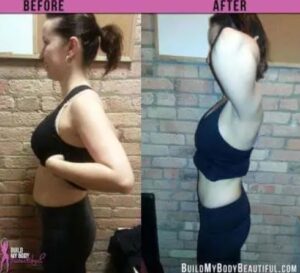How to Adjust Your Workout and Diet for Best Results
The Reason Behind My Fitness Plateau: A Personal Tale
I remember the time I hit my first fitness plateau. I had been following a custom workout and diet plan religiously, but suddenly, I wasn’t seeing any more progress. I didn’t adjust my workout or diet at all. The scale was stagnant, my muscle growth seemed to have hit a standstill, and my energy levels weren’t what they used to be. After consulting with my personal trainer, I learned an invaluable lesson: our bodies are not static, and neither should our fitness plans be. This realization led to a deep dive into the world of fitness plan adaptation.
The Why: Adjustments are Not Optional
Our bodies are intelligent systems. They adapt to the demands we put on them, and with time, what was once a challenging workout can become just another routine. This is when we hit a “plateau.” It’s the body’s way of saying, “I’ve mastered this, give me something new.”
Adjusting your custom workout and diet plan is necessary to keep the body challenged and to continue seeing results. It is also crucial for preventing overuse injuries and maintaining interest and motivation. If you’re doing online training, your coach might not be there to observe your progress in real-time. Therefore, understanding the need for adjustments is even more critical.
Signals for Adjustment in Your Fitness Regime
Recognizing the need for change in your workout routine can be tricky, but here are some tell-tale signs:
- You’re not seeing progress: If your goal is to lose weight, gain muscle, or increase endurance and you’re not seeing results, it might be time for an update.
- You’re always sore: While some muscle soreness is normal after exercise, constant or extreme soreness can indicate overtraining.
- You’re bored: If you’re no longer enjoying your workouts, switch things up. A new challenge can reignite your enthusiasm.
Time for a Change: Modifying Your Diet Plan
Just as with your workout routine, adjusting your diet plan is an essential part of your fitness journey. Here are some signs that your nutritional plan might need a tweak:
- You’re always hungry or full: It might mean that you’re not eating the right balance of macronutrients.
- You’re fatigued: If you’re always feeling tired, it could be a sign that you’re not getting enough calories or certain nutrients.
- You’re not meeting your goals: If you’re not losing weight or gaining muscle, despite working out regularly, re-evaluating your diet can be key.
Remember, adjusting your custom workout and diet plan is not about striving for perfection. It’s about learning, experimenting, and finding what works best for your body at each stage of your fitness journey. Don’t be afraid to make changes and keep challenging yourself. After all, that’s how progress happens.
Practical Steps for Adjusting Your Workout Plan
Making adjustments to your workout plan doesn’t have to be complicated or intimidating. In fact, with a few simple steps, you can easily tailor your fitness routine to better match your personal goals and lifestyle.
Listen to Your Body:
Start by paying close attention to your body. If you’re feeling fatigued or noticing a decrease in performance, it may be a sign that you need to adjust your workout routine.
Set Realistic Goals:
Next, take a look at your fitness goals. Are they realistic? If not, consider revising them. Remember, it’s better to set smaller, achievable goals than to aim for the impossible and risk injury or burnout.
Vary Your Routine:
Variety is the key to preventing boredom and maintaining progress. Try incorporating different types of exercises into your routine, such as strength training, cardio, and flexibility exercises.
Rest and Recover:
Lastly, don’t underestimate the importance of rest. Your body needs time to recover and rebuild muscles, so make sure to schedule rest days into your workout plan.
Healthy Ways to Tweak Your Diet Plan
In addition to adjusting your workout routine, tweaking your diet can also play a significant role in reaching your fitness goals. Here are some tips for making healthy changes to your diet:
Eat a Balanced Diet:
Aim to eat a variety of foods from all food groups. This ensures that you’re getting a wide range of nutrients, which can help fuel your workouts and aid in recovery.
Stay Hydrated:
Water plays a crucial role in nearly every bodily function, including digestion and muscle function. Staying hydrated can help ensure that your body functions optimally.
Watch Portion Sizes:
Even healthy foods can contribute to weight gain if you eat too much of them. Pay attention to portion sizes to avoid overeating.
Listen to Your Body:
Just like with exercise, it’s important to listen to your body when it comes to your diet. If you’re constantly feeling hungry or unsatisfied, it might be time to adjust your diet plan.
Tips to Maintain Motivation During These Changes
Change can be challenging, and it’s normal to feel unmotivated at times. Here are some tips to help you stay motivated:
Set Achievable Goals:
Setting realistic and achievable goals can help you stay motivated. When you reach a goal, celebrate your success to boost your motivation.
Find a Workout Buddy:
Working out with a friend can make exercise more enjoyable and can provide a source of motivation and accountability.
Focus on Progress, Not Perfection:
Remember, fitness is a journey, not a destination. Celebrate small victories and progress, rather than striving for perfection.
Case Studies and Success Stories
Success stories and case studies can provide inspiration and motivation. Here are a few examples:
Case Study 1: Jane, a busy mom of three, managed to lose 30 pounds by making small adjustments to her diet and workout routine. She started by cutting out sugary drinks and gradually increased her physical activity.
Case Study 2: Mike, a former couch potato, transformed his life by incorporating regular exercise into his routine. He started with short walks around the block and gradually worked his way up to running marathons.
These stories highlight the power of making small, sustainable changes to your workout and diet plans. Remember, every little bit counts, and consistency is key.









